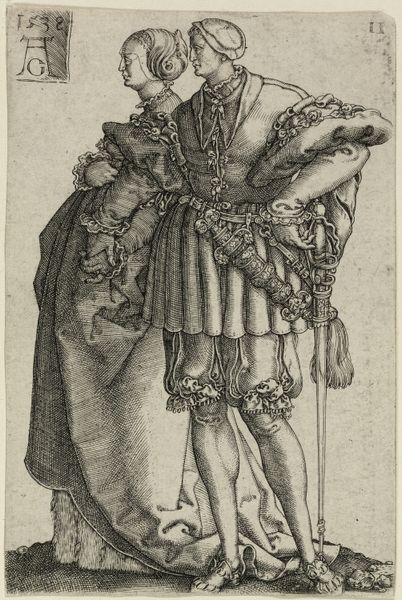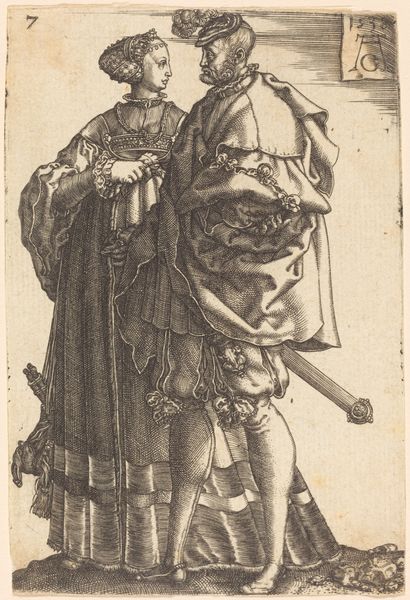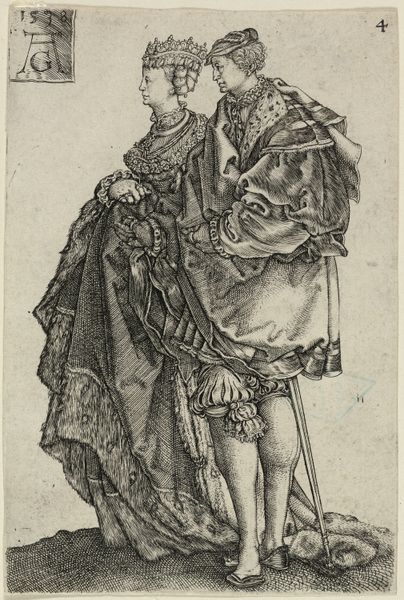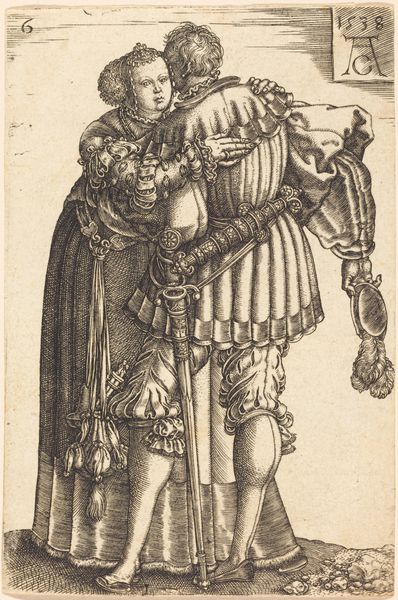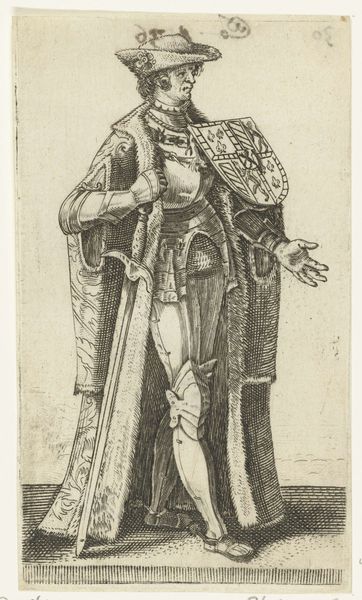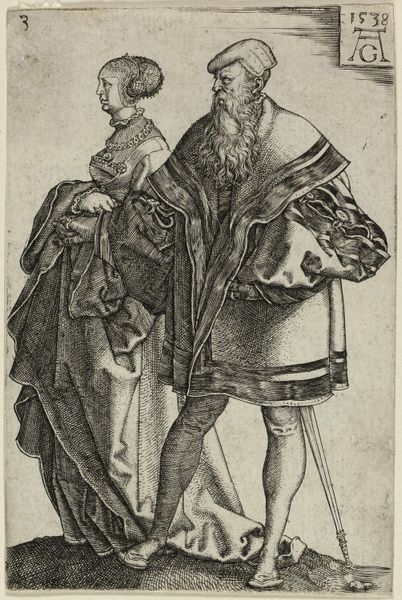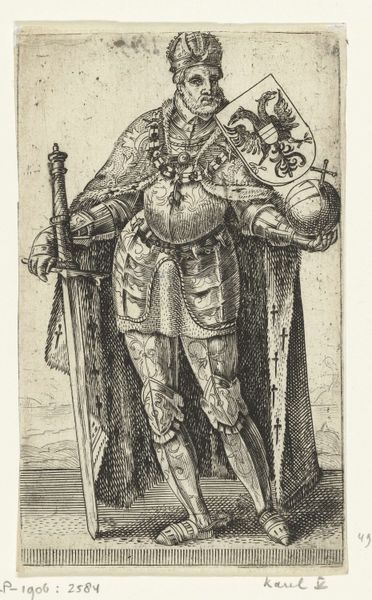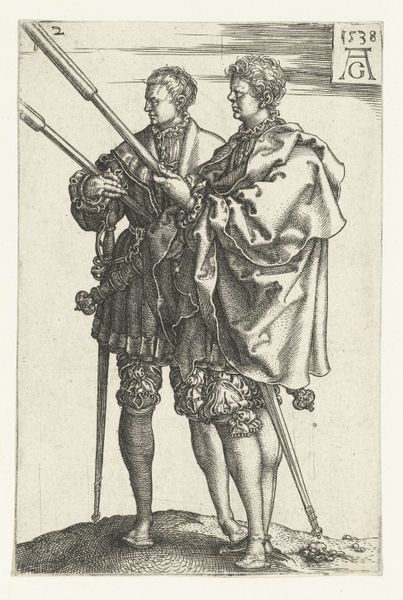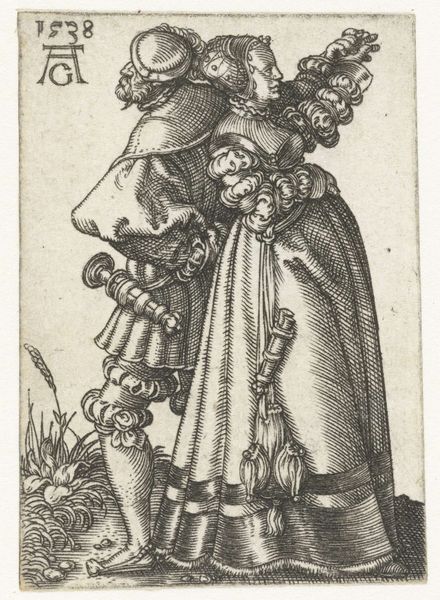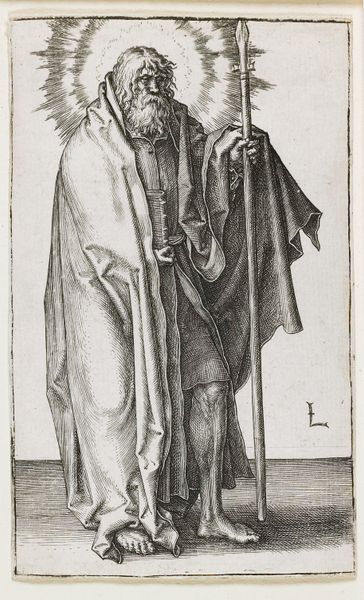
Dimensions: height 117 mm, width 77 mm
Copyright: Rijks Museum: Open Domain
Curator: This is “Dancing Couple No. 5,” a piece created in 1538 by Heinrich Aldegrever, currently held in the Rijksmuseum's collection. He fashioned it using engraving. Editor: My first thought is how opulent it feels, even within the limits of a black and white print. The detailed textures and elaborate clothing speak of status and maybe a bit of theatricality. Curator: Aldegrever was deeply involved in the artistic and political shifts of the Northern Renaissance. Prints like this played a vital role in circulating imagery and ideas, especially during the Reformation, a period when artistic symbolism was politically charged. This particular image probably served as a model or inspiration piece for craftsmen or artisans needing to depict current fashions. Editor: I’m fascinated by how fashion operates as its own language here. The layers, the slashes, the codpieces all speak volumes about masculine identity and social hierarchy. They’re practically mobile emblems. Curator: Precisely. These fashion statements reflected the growing economic power of the merchant classes challenging older aristocratic orders, though this image does also conjure something of a traditional medieval courtly scene. Their very costumes signify allegiances and aspirations within a rapidly changing world. Editor: And beyond social messaging, how does Aldegrever employ form to heighten our attention? I notice the composition places the male figure slightly forward, dominating the frame even though he isn’t much taller than the female figure, a clear statement on gender and power. Curator: A great point, I think that what’s particularly striking about this piece is how the artist presents that tension through their close proximity. Although this couple is shown dancing, there appears to be very little touch. Their body language communicates restraint and formality, which hints to more cultural codes regarding behavior and control, which, I believe, carries substantial psychological significance regarding relationships. Editor: Considering it’s an engraving, the level of detail achieved is impressive, wouldn’t you say? Every fold of fabric, every strand of beard hair, is rendered with care, reinforcing a sense of luxurious surfaces. It reminds me how meticulously constructed social appearances were, then, even within artworks. Curator: Yes, Aldegrever’s craftsmanship emphasizes how art also functioned as a method of cultural storytelling and preservation. It reveals, even now, how we curate and project status. Editor: Reflecting on this piece together helps me appreciate the weight of historical echoes still felt today, particularly in how appearances dictate roles. Curator: For me, it reaffirms how historical images act as vital psychological bridges that speak not just of what was, but what continuously reshapes us now.
Comments
No comments
Be the first to comment and join the conversation on the ultimate creative platform.

